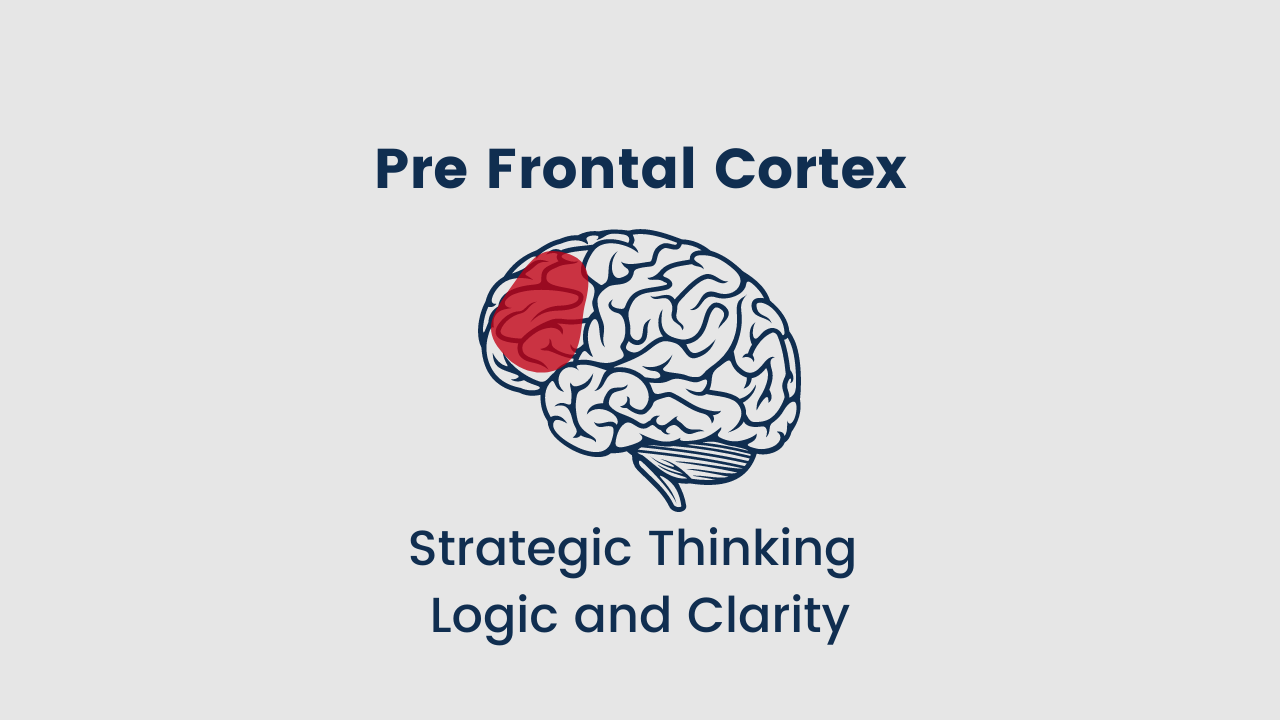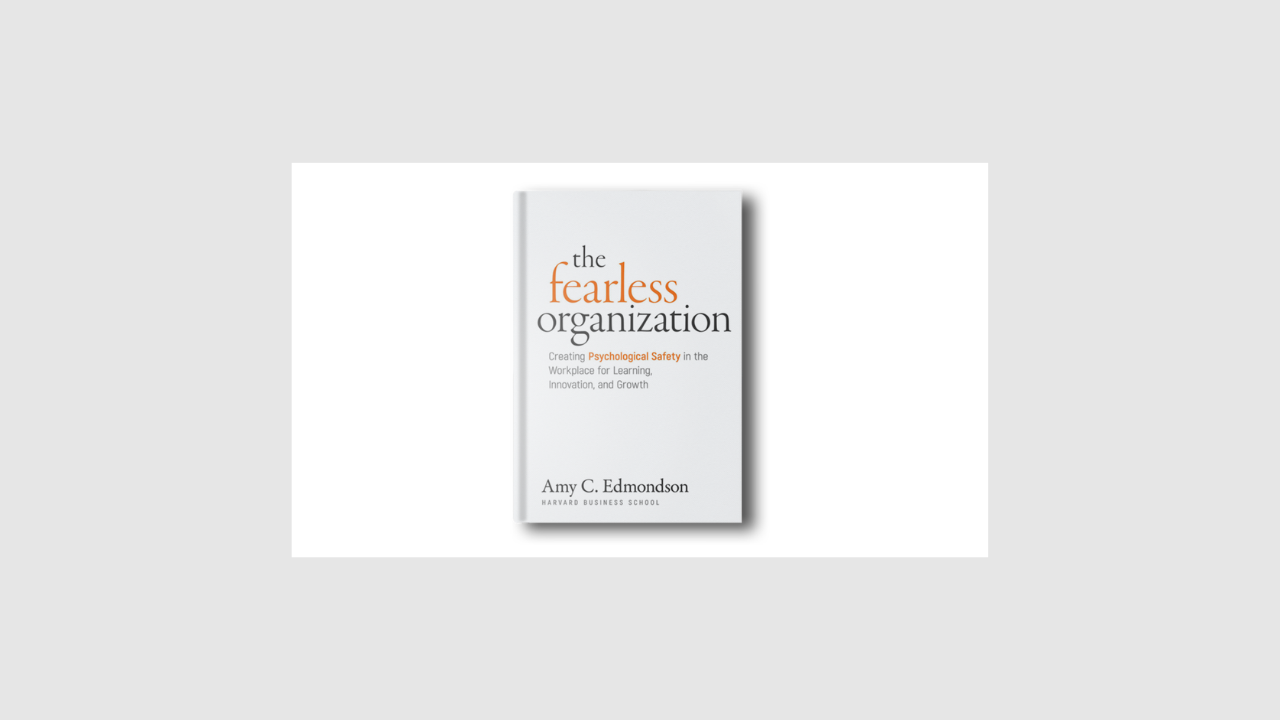Creating a Fearless Organization
Listen to a reading of this blog post at: Kutsko Consulting Audio Blog.
How to Build Psychological Safety on Your Team
‘There’s no team without trust’ Paul Santagata, Head of Industry, Google. Quote via HBR
When it comes to team performance, Google discovered that there’s a common denominator across top-performing teams. Google undertook a two-year comprehensive study on teams which revealed that psychological safety is critical for performance.
Psychological safety is about creating a culture where team members don’t feel threatened with punishment or ridicule and feel comfortable taking risks. When they know they’re not going to be criticized for making a mistake; a fearless environment is created where team members can flex their individuality and be creative without fear of ridicule or ostracization that they’re not conforming to the well-beaten path.
What is Psychological Safety?

In 1999, Harvard’s Amy Edmondson published an influential paper in which she discussed the concept of the psychological safety of work teams. In her research with hospital teams, she discovered that some of the best teams made the most mistakes. Or at least, it seemed that way. In truth, it was not that they were making more mistakes than other teams, but that they acknowledged their mistakes instead of trying to cover them up.
Psychological safety means knowing that you won’t be punished or ridiculed when you make a mistake. It is grounded in neurology and challenging to achieve as the primitive response of the amygdala hampers humans. The amygdala is an almond-shaped alarm bell near the base of the brain which triggers a ‘fight or flight’ response. It’s an automatic, primitive reaction to threatening stimuli remaining from early civilization when humans were constantly exposed to mortal danger - wild animals, the vagaries of weather, hostile tribes. When confronted with danger, the amygdala’s response would kick in to prompt a person to either fight for their life or flee the situation. It does so by pumping out stress hormones and shutting down bodily functions that aren’t essential to running or fighting, including rational thought. When the amygdala kicks in, it disables the frontal lobes, which are the part of the brain that allow you to process emotions and determine a logical response. Without the frontal lobes, you can’t think clearly.

While humans have evolved from the perils of primitive civilization, the amygdala continues to function in the same way. So when a person is provoked by a co-worker or belittled by a boss, the brain interprets it as a life or death threat and the amygdala alarm bell sounds, shutting down logic and reason. Just when we need our wits about us, we literally lose our minds! The threat we are facing handicaps the strategic thinking and logic we need to solve problems, communicate and collaborate in the workplace.

The more we can feel psychologically safe in the workplace, the less our brain will react irrationally, and the better we can perform.
Achieving Psychological Safety
Generating Positive Emotions
While fear provokes the shutdown of our resources and logic, there are other emotions we can foster that precipitate helpful responses and build resilient psychological resources. Barbara Frederickson at the University of North Carolina found that trust, curiosity, confidence and inspiration broaden the mind. We become more open-minded and motivated and have a better sense of humor. We improve our ability to find solutions when generating positive emotions.
Challenging vs Threatening
Some would argue that there’s no way of creating a stress-free environment in the workplace as there will always be deadlines, problems to solve, and other difficult situations to confront. However, there is a difference between a psychologically safe environment and an environment that is stressful because it is threatening. Work can feel challenging and call upon our resources and collaboration to meet challenges. Still, there is a difference in doing this supportively collaboratively in a way that all participants feel safe, as opposed to approaching problems and conflicts by competing with and undermining each other. At this point, the team is no longer a team but a collection of individuals, each fighting their fight. When a workplace is challenging but not threatening, not only does it minimize amygdala alarms going off, but it is more likely to produce increased levels of oxytocin in the brain, which is an essential chemical in building trust. When team members can trust each other, it is easier to take risks, speak their minds and be vulnerable.
The Google Study
‘In Google’s fast-paced, highly demanding environment, our success hinges on the ability to take risks and be vulnerable in front of peers’ - Paul Santagata, Head of Industry, Google.
Learning from Google’s study into high-performing teams, there are several takeaways we can note.
Dealing With Conflict
In contentious situations, focus on reaching a mutually desirable solution rather than siding with who is right. This negates the conclusion of there being a resulting ‘loser’. It’s hard to get over losing, and a loss will result in knock-on effects as an aggrieved team member subconsciously attempts to ‘get even’ and restore their sense of fairness, usually by competing further, criticizing others, or attempting to sabotage the decided course of action. Alternatively, they may disengage from the project altogether. Discourage the concept of a ‘winner’ and ‘loser’ in any conflict situation by switching the focus to seeking win-win outcomes. If you change direction to the outcome and support the team to solutions everyone can stand behind, this will encourage greater collaboration and diminish an adversarial culture.
Just Like Me
Santagata shared a practical reflection with his team to remind them that the other party is just like them in even the most conflict-fuelled situations. Santagata asked his team to contemplate that someone they disagree with -
- has beliefs, perspectives, and opinions, just like me
- has hopes, anxieties, and vulnerabilities, just like me
- has friends, family, and perhaps children who love them just like me
- wants to feel respected, appreciated, and competent, just like me
- wishes for peace, joy, and happiness, just like me
This prompts us to recognize the common humanity we share, regardless of perspective or opinion, and get back on track to trying to find a win-win solution.
Plan for Unfavorable Reactions
Where you have to disseminate messages and decisions that you anticipate are not going to be met well, plan how you are going to present it. The idea is to maintain as much psychological safety as possible and minimize the chance that the audience hears the message as a personal attack. Prepare for how listeners will respond and likely counterarguments. Be prepared with your evidence, conviction and how you’ll respond in different scenarios.
Curiosity
Address problematic behavior as an observation, using neutral and often passive language with staff, for example, ‘there’s been a slow in progress on project X’. This frames the problem as an observation as opposed to an accusation. The more you can shift from blaming, the better since blame and criticism escalate the conflict.
Follow up the observation with an invitation to explore the cause, for example ‘I imagine there are multiple factors at play - any ideas we could talk through together?’
Ask for their input on the solution. When team member is exhibiting problematic behavior, they might need more support. Try asking directly, ‘What needs to happen here?’ or ‘How could I support you?’
Surveys and Checkups
At Google, Santagata’s team regularly undertakes surveys to gauge the team’s psychological safety level on an ongoing basis. You can easily create a quick survey adapted to the context of your team. Tailor some general questions to your needs - for example, ‘How confident do you feel of not being criticized for making a mistake?’
The Fearless Organization
 In Amy Edmondson’s latest book, The Fearless Organization, she argues that talent is not enough to drive a successful organization, but rather that organizations should foster a safe culture so that creativity and teamwork can flourish. A safe culture doesn’t mean wearing rose-colored glasses and talking each other up with constant positives, but rather allowing for vulnerability and mistakes as part of the process.
In Amy Edmondson’s latest book, The Fearless Organization, she argues that talent is not enough to drive a successful organization, but rather that organizations should foster a safe culture so that creativity and teamwork can flourish. A safe culture doesn’t mean wearing rose-colored glasses and talking each other up with constant positives, but rather allowing for vulnerability and mistakes as part of the process.
When we can create a working team environment that mitigates threat, fear, and intimidation, staff can let their amygdala relax, keep their frontal lobes working, and optimize their strategic and logical thinking to achieve high performance.
Free Preview
Sign up now and get access to our Free Preview as well as the freshest tips and tricks delivered to your inbox once a week. Our weekly newsletter is trusted by thousands of managers, executive leaders, and learning & development professionals.
We hate SPAM. We will never sell your information, for any reason.
